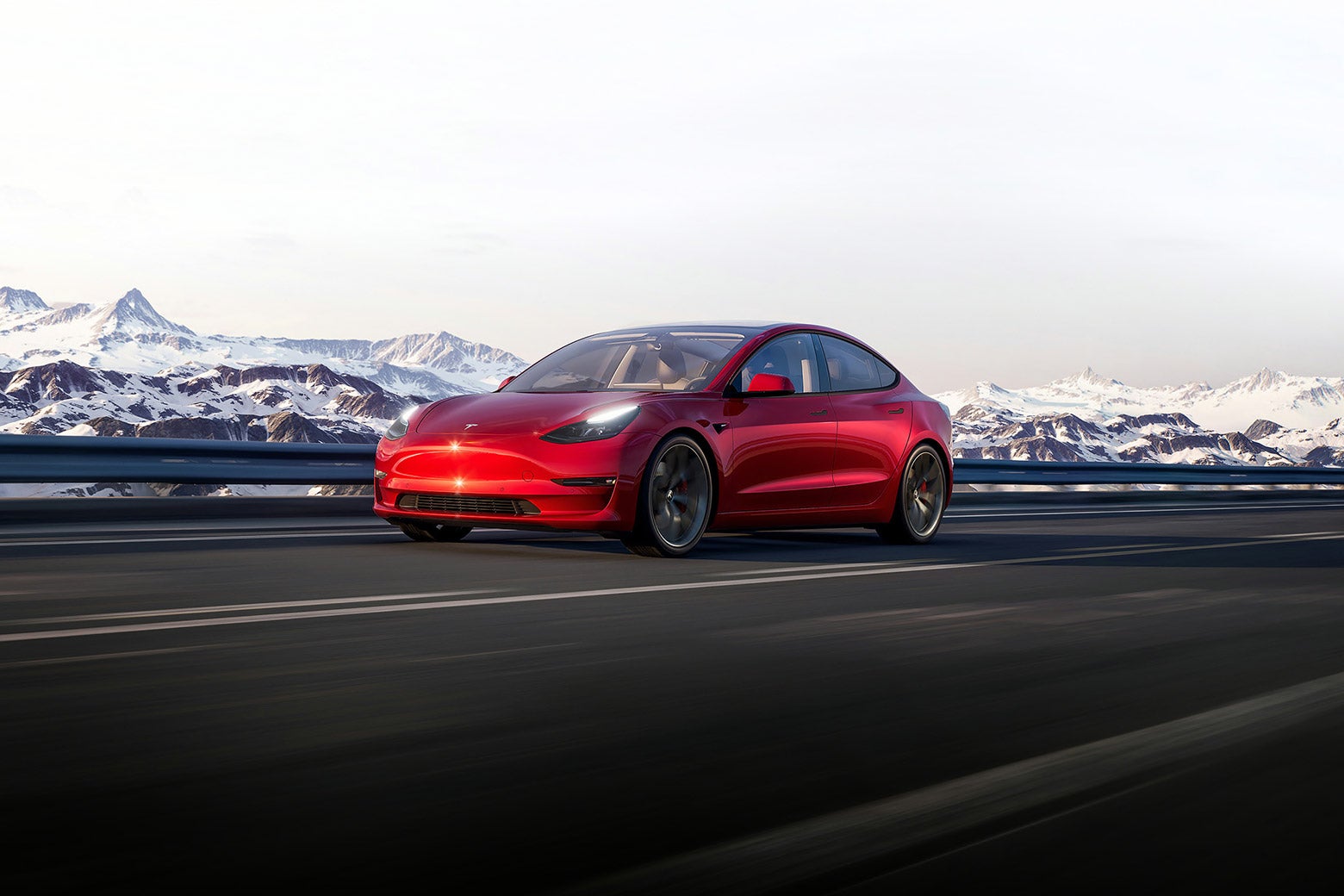We were easy marks.
Not a Tesla apologist, but this article kind of contradicts itself.
They argue that Tesla is lying about vehicle range, but then saying that Tesla is guilty of normalizing building vehicles with oversized batteries which customers don’t need (because they only drive 40 miles a day) which is putting a strain on the battery supply chain.
Wouldn’t Tesla lying about range be them minimizing their impact on the battery supply chain?
And the rest of the article goes on to complain about the battery arms race which I agree with (anybody who can charge at home doesn’t need more than 100 mile range for their second vehicle), but that’s hardly Tesla’s fault. On every thread discussing EVs for the past 10 years, there’s always some petrolhead complaining that EVs aren’t able to easily complete the 15 hour, 900 mile, road trip they apparently drive every week. The market wanted a replacement for gas cars, Tesla did what they could to meet that demand.
Also, the articles linked about Tesla lying about range mostly discuss how all EVs fall short of EPA range when tested by Car and Driver. That suggests the blame lies with EPA testing, and Car and Driver even has a suggestions on what to change about the EPA’s methodology.
Wouldn’t Tesla lying about range bee then minimizing their impact on the battery supply chain?
Not at all, they’re still stuffing their cars with lots of big batteries, and then lying about the range those batteries give.
anybody who can charge at home doesn’t need more than 100 mile range for their second vehicle
Wow way to throw nuance and individual needs totally out of the window.
Do you even take yourself seriously?
, and supply chains aren’t scaling anywhere near fast enough to put a 300-mile range EV in every driveway in time to slow climate change.
And if they were scaling we would just accelerate climate change even more. New cars don’t slow climate change. Repair your old one, or take the bus, or use a bike.
Should really be converting all cars to ev. Then when they all break move to lighter and better suited evs
So, pile a pile of trash on top of a pile of trash on top of a pile of trash? Yup, that’s gonna save lots of resources and energy.
What are you trying to say ? Can you say it with more words ?
@stopthatgirl7 Perhaps it’s time that people accepted that Toyota was right: We want a diversity of electrified vehicles. Hybrids, plug-in hybrids and fuel cell cars all have their role to play right now. It should not be a monoculture of BEVs.
No one is stopping any country or company from producing fuel cell cars. If Toyota is right, where are the fuel cell corollas?
I am not knocking fuel cell vehicles, I wish they were viable but after 20 years of R&D they still haven’t solved the H2 storage problems, and it is starting to look like it will never be practical for a vehicle the form factor of a car.
They started selling fuel-cell cars last year. Both Toyota and Hyundai sell hydrogen-powered cars. https://www.hyundaiusa.com/us/en/vehicles/nexo and https://www.toyota.com/mirai/ So they do exist. They are actively on the road. You may purchase one at your convenience.
Last year? The Mirai went on sale in 2014, the Nexo in 2018. Just nobody buys them because there are no fueling stations, and there shouldn’t be any for their horrible inefficiency anyway.
Where were BEVs just 15 years ago? These things do not happen all at once. Most arguments against fuel cell cars are outdated and from people stuck in the past.
the biggest hindrance to hydrogen is the cost to build a hydrogen station vs out in ev chargers. why would anyone build a hydrogen station when they could install many ev chargers for the same price. maybe trucking and busses, like greyhound not metro or school, could be a usecase for hydrogen going forward.
It’s cheaper to install hydrogen stations than it is to build charging stations. That’s because it cost 10x less to move hydrogen around compared to electricity.
https://www.brinknews.com/could-hydrogen-replace-the-need-for-an-electric-grid/
Across all 111 planned new hydrogen fueling stations, an average hydrogen station has capacity of 1,240
kg/day (median capacity of 1,500 kg/day) and requires approximately $1.9 million in capital (median
capital cost of $1.9 million).https://www.hydrogen.energy.gov/pdfs/21002-hydrogen-fueling-station-cost.pdf
Most commercial enterprises look to install level two charging stations, which run on 240-volt power and provide a compromise between power and cost. A level two electric vehicle charging station costs around $2,500 for a non public facing and $5,500 for a public facing dual-port station—it can charge two cars simultaneously in eight to 10 hours.
https://futureenergy.com/ev-charging/how-much-do-ev-charging-stations-cost/
As more drivers purchase plug-in electric vehicles (PEVs), there is a growing need for a network of electric
vehicle supply equipment (EVSE) to provide power to those vehicles. PEV drivers will primarily charge
their vehicles using residential EVSE, but there is also a need for non-residential EVSE in workplace, public,
and fleet settings. This report provides information about the costs associated with purchasing, installing,
and owning non-residential EVSE. Cost information is compiled from various studies around the country, as
well as input from EVSE owners, manufacturers, installers, and utilities. The cost of a single port EVSE unit
ranges from $300-$1,500 for Level 1, $400-$6,500 for Level 2, and $10,000-$40,000 for DC fast charging.
Installation costs vary greatly from site to site with a ballpark cost range of $0-$3,000 for Level 1, $600-
$12,700 for Level 2, and $4,000-$51,000 for DC fast charging.https://afdc.energy.gov/files/u/publication/evse_cost_report_2015.pdf
or its cheaper to install ev chargers.
More stations more greater economies of scale. At some point this will be no more expensive than a gas station. Also, you have a much greater capacity per station compared to a charging station. It will pencil out to being cheaper than building the much greater number of charging stations. Not to mention maintenance. The cost of maintaining millions of charging stations will be a major challenge.
im no business major but even i can see its a no brainer to go with an 38 ev chargers vs 1 hydrogen station. and the same economies of scale will make it cheaper to build more ev stations cheaper. hydrogen may have a place, trucking and busses like greyhound might make sense for hydrogen but currently it makes no sense to build a hydrogen station for normal passenger vehicles.
it cost 10x less to move hydrogen around compared to electricity.
Moving electricity around only requires aluminum wire and transformers. Incredibly cheap. Moving hydrogen around requires either roads and trucks (already more expensive than high voltage AC transmission) or a pipeline that won’t leak hydrogen plus training for emergency response (also more expensive than high voltage AC).
Steel pipes are even cheaper. You are just regurgitating pro-BEV talking points. It is much cheaper to move hydrogen around than electricity.
But it isn’t just steel pipe. It’s steel pipe precision welded and leak checked, buried under ground, with lots of continual maintenance, pump stations to increase pressure, control systems, etc. More expensive even than natural gas piping, which is already difficult to get installed with municipalities frequently rejecting it for safety reasons.
We’ve been back and forth on this countless times over the years, you and I, but you keep coming back to these same points. None of which are correct. BEVs use existing infrastructure, and while they are NOT the best solution, they are the best solution people are going to choose. You’re flat out not going to get someone to pay more for hydrogen than they would for any any other fuel, producing the hydrogen isn’t as energy efficient as charging a battery, and installing an H2 station is significantly more expensive than installing even a DCFC station with four or six stalls and all the complimentary transformers necessary.
Where were BEVs just 15 years ago?
Where are fuel cells today?
I read my first story about the coming fuel cell cars in 1996, and they were less than a decade from production then, but they never came.
Toyota, the builder of some of the best cars ever made, has spent decades and billions trying to make fuel cells work for cars. If a company with the engineering excellence of Toyota is struggling for so long…
BEVs are not on the road because they are better than fuel cells. If fuel cells could be practically made, they would beat BEVs in every aspect. Range, refuelling, environmental impact
But they don’t.
BEVs are not better than fuel cells but they actually work for cars.
BEVs are over 100 years old. In fact, they’re older than ICE cars. No one seems to notice that this is the longest development process of any technology in the industry.
Meanwhile, fuel cells are just coming into their own. Most of your arguments are just totally outdated and stuck in the past. You seem oblivious to the fact that FCEVs already exist and are being sold to the public right now. They’re already a developed technology, just one that hasn’t become popular yet. It is likely dismissing solar and wind energy just as they were taking off. It is just being closed-minded and short-sighted to say these things.
I have a photo of GM’s fuel cell test vehicle driving on the highway from 2009, some 14 years ago. Most of the arguments against fuel cells are the cost and complexity of hydrogen, and the logistics of getting it around any given country. Those are not outdated, they are absolutely as true today as they were 15 years ago.
GM made a BEV back in the 1990s. They did a lot of things long before they were ready. The point you are missing is that cost is rapidly coming down. An FCEV will be no more expensive than an ICE car to make. People who continue to repeat the “high-cost” argument are just stuck in the past. A total repeat of what people said of BEVs too.
Slate froze the screen because I use an ad blocker. Oh well. Buh bye slate.
I’m definitely no battery engineer, so correct me if I’m wrong, but… wouldn’t a 100-mile-range battery pack have a shorter life span than a 200-mile pack under the same usage since its charge/discharge cycles would be deeper in terms of %, and possibly more frequent because of the reduced range?
Yes, this is kind of true. But how you use the battery is also important. If you frequently DC fast charge your pack, it will wear out significantly faster than using Level 1 (120V AC) or Level 2 (240V AC) charging. This is because DCFC pushes the boundaries of how much current the battery can safely take in order to reduce the amount of time it takes to charge the car. It’s a balancing act between customer acceptability and limiting battery degradation.
We were easy marks.











